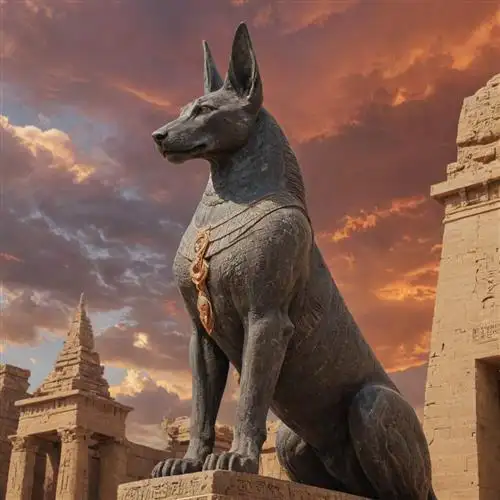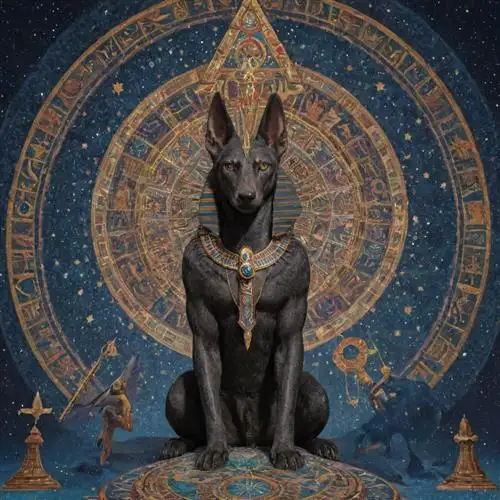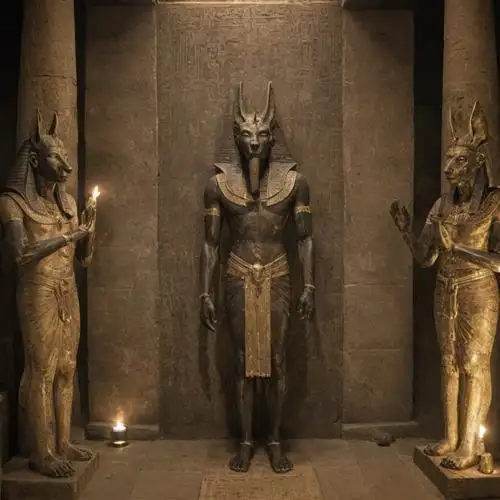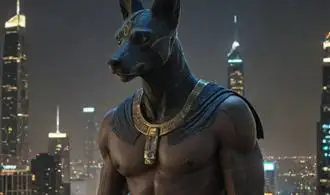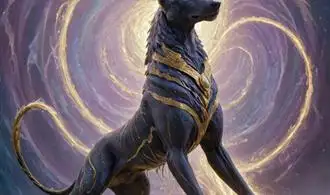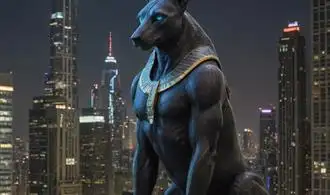
The Rise of the Anubis Cult
The ancient Egyptian god Anubis, the jackal-headed deity associated with mummification and the afterlife, was a central figure in the religious and cultural landscape of ancient Egypt. The Anubis cult, which revered this powerful god, rose to prominence during the Old Kingdom and continued to hold a significant place in Egyptian theology and practices throughout the dynastic period.
Anubis' association with the embalming process and the journey of the dead into the afterlife made him a crucial figure in the Egyptian funerary rituals. As the guardian of the dead and the guide to the underworld, Anubis was believed to oversee the mummification of the deceased and ensure their safe passage to the afterlife. This role solidified Anubis' status as a fundamental deity in the Egyptian pantheon and the Anubis cult.
- The importance of the afterlife and mummification in ancient Egyptian beliefs, which placed Anubis at the center of these practices.
- The strategic location of the cult's primary centers, such as Abydos and Cynopolis, which were significant religious and funerary sites.
- The widespread adoption of Anubis as a protective deity, leading to the establishment of shrines and temples dedicated to him throughout Egypt.
- The incorporation of Anubis into the Osirian funerary cycle, further strengthening his position as a crucial figure in the Egyptian afterlife.
- The development of the Anubis cult's rituals and ceremonies, which reinforced the god's importance and attracted devotees from all social strata.
As the Anubis cult grew in prominence, so did the depiction and representation of the god. Anubis was often portrayed as a jackal-headed man, a symbolic representation of his role as the guardian of the dead. These iconic images of Anubis became ubiquitous in ancient Egyptian art, temples, and funerary objects, further solidifying his place in the Egyptian pantheon and the collective consciousness of the ancient Egyptians.
Rituals and Ceremonies of the Cult
The Anubis cult was renowned for its intricate and captivating rituals, which were designed to honor the jackal-headed god and invoke his divine presence. At the heart of these ceremonies lay a deep reverence for the mysteries of death, transformation, and the afterlife - themes that were central to Anubis' domain.
One of the most significant rituals was the Opening of the Mouth ceremony, performed during the embalming process of the deceased. This ritual was believed to restore the capacity of the dead to breathe, speak, and perceive the world of the living, ensuring a smooth transition into the afterlife. Skilled priests would carefully execute a series of elaborate gestures and recitations, using specialized tools to "open the mouth" of the mummy, symbolically imbuing it with the ability to partake in the offerings and enjoy the sustenance provided by the living.
Another crucial aspect of the Anubis cult's rituals was the celebration of the New Year, marked by the annual flooding of the Nile. This event was seen as a time of renewal, rebirth, and the restoration of cosmic order. Worshippers would gather at the temple of Anubis, engage in purification rites, and participate in elaborate processions and offerings to the god, seeking his blessing and protection for the coming year.
The cult also practiced a range of funerary rituals, designed to ensure a successful transition of the deceased into the afterlife. These included the preparation of the body, the construction of elaborate tombs and sarcophagi, and the placement of various funerary objects and provisions to sustain the individual in the afterlife. The jackal-headed Anubis was believed to oversee and guide the soul through the perilous journey to the underworld, making him a central figure in these funerary rituals.
Symbols and Iconography of Anubis
Anubis, the iconic jackal-headed deity of ancient Egyptian mythology, is renowned for his profound symbolism and intricate iconography. As the patron god of mummification and the guardian of the afterlife, Anubis' visual representations offer a wealth of insights into the complex beliefs and practices of the ancient Egyptians.
One of the most striking features of Anubis' iconography is the jackal or dog-like head that adorns his distinctive form. This canine-inspired visage is not merely a stylistic choice but a deliberate representation of the god's association with the jackal, a creature closely linked to the realm of the dead in ancient Egyptian cosmology. Jackals were often observed prowling around cemeteries and burial sites, and their scavenging behavior was seen as a metaphor for Anubis' role in the embalming and protection of the deceased.
In addition to his canine-inspired head, Anubis is frequently depicted holding or adorned with a variety of other symbolic objects and accoutrements. The Why Anubis is the Guardian of the Afterlife article delves deeper into his role as the guardian of the afterlife, but it's worth noting that Anubis is often shown holding the crook and flail, two of the primary royal regalia associated with Egyptian pharaohs. This symbolism underscores Anubis' importance and authority within the realm of the dead, where he presided over the crucial process of mummification and the judgment of the deceased.
Another common iconographic element associated with Anubis is the ankh, the ancient Egyptian symbol of life. This hieroglyphic sign, often held by Anubis or incorporated into his visual representations, serves to highlight the god's role in facilitating the transition from the mortal realm to the afterlife, guiding the deceased on their journey and ensuring their eternal existence.
Interestingly, Anubis' iconography also includes instances where he is depicted with a human body and a jackal head, or even as a fully canine figure. These variations in his visual representation reflect the fluid and multifaceted nature of ancient Egyptian deities, whose forms and attributes could shift depending on the specific context or ritual being depicted.
The Mummification Process and Anubis
Anubis, the jackal-headed god, held a central role in the mummification process of ancient Egypt. As the god of embalming and the afterlife, Anubis was responsible for guiding the deceased through the complex rituals that ensured the preservation of the body and the soul's safe passage to the afterlife.
The mummification process was a meticulously choreographed ritual that involved several steps. First, the body was washed and purified, often with natron, a naturally occurring salt. The internal organs were then carefully removed and placed in canopic jars, each guarded by a different god. Anubis oversaw this crucial step, ensuring the proper removal and preservation of the organs.
Next, the body was dried and wrapped in layers of linen, with Anubis playing a pivotal role in the wrapping ceremony. The Anubis priest, adorned in a jackal mask, would perform the final rites, reciting spells and incantations to protect the mummy and guide the soul to the afterlife.
The significance of Anubis in the mummification process cannot be overstated. He was believed to have the power to resurrect the dead and ensure the preservation of the body, which was essential for the soul's journey to the afterlife. The Egyptians thought that if the body was not properly mummified, the soul would be unable to return to it, dooming the deceased to eternal restlessness.
Anubis's role extended beyond the mummification process itself. He was also responsible for weighing the heart of the deceased against the feather of truth, a crucial step in the judgment of the soul in the afterlife. This ceremony, known as the "Weighing of the Heart," determined whether the individual was worthy of entering the afterlife and joining the gods.

